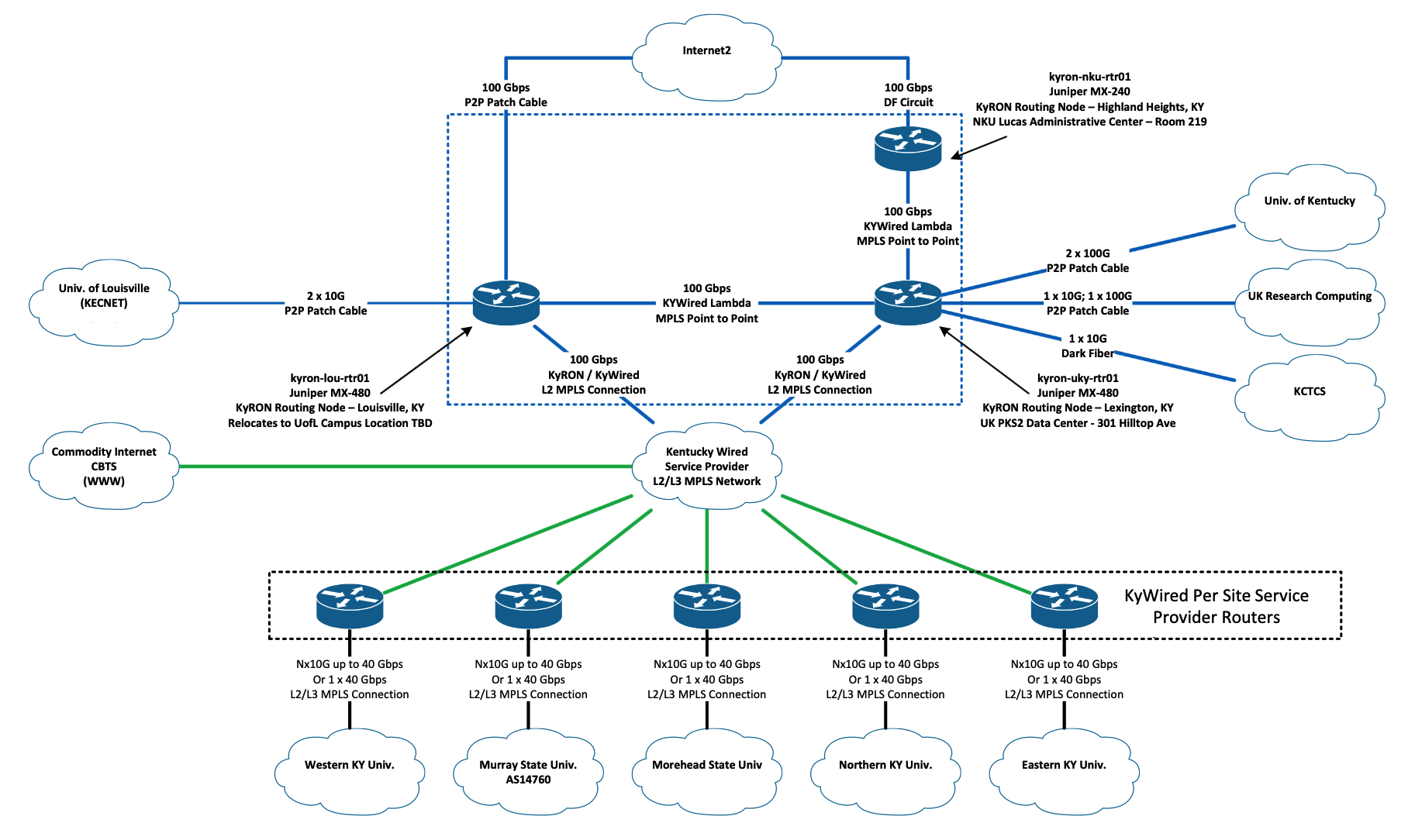Cincinnati Node, Windstream Migration and Network Enhancements
Existing access connectivity for KyRON connectors is provided either as a 10G point-to-point layer 2 service through Windstream’s network, or as a direct physical fiber connection, to one of the KyRON routers in either Louisville or Lexington. Backhaul connectivity between Lexington and Louisville is provided by through the KentuckyWired / KCNA optical transport network, and there is a single egress to Internet2 via the Louisville router.
The KentuckyWired / KCNA network represents a major enhancement in connectivity available to the state and its Higher Education entities. Beginning in late 2022 / early 2023 KyRON connector connections will begin to move from the Windstream network to the KentuckyWired / KCNA network. Additionally, the KyRON network will undergo some changes to collocate routing nodes with the KentuckyWired / KCNA super nodes, and a 2nd Internet2 egress will be added via a new router to be installed on the Northern Kentucky University campus, which will have a direct physical (dark fiber) connection to the Internet2 network in Cincinnati, OH, and 100G backhaul from NKU to the KYRON router in Lexington over the KentuckyWired / KCNA optical transport network. Finally, commodity Internet 1 access through KyRON will be discontinued.
KentuckyWired / KCNA network connections at each connectors demark will provide access to an MPLS network operated by the KCNA service provider. KyRON routers in Lexington and Louisville will connect to this MPLS network at 100 Gbps, and point-to-point layer 2 pseudo-wire connections through the KCNA MPLS network will replace the existing point-to-point Windstream links. In its final form, KyRON envisions that a connector (if capable) would be able to utilize their physical connections to the KCNA MPLS network to peer both as many as 2 of their border routers to both the Lexington and Louisville KyRON routers. Additionally, connectors may utilize their physical connection from the KCNA network to independently procure additional services that the KCNA service provider network may offer now or in the future. It is anticipated that the KCNA equipment being installed in each demark will be cable of providing either four (4) 10 Gbps handoffs, or a single 40 Gbps handoff for each connector. The KCNA equipment should be capable of supporting 1 connector router connecting at 1 x 10G, 2 x 10G, 4 x 10G, or 1 x 40G, or capable of supporting 2 connector routers each connecting at 1 x 10G, or 2 x 10G.
Proposed Future State Topology
